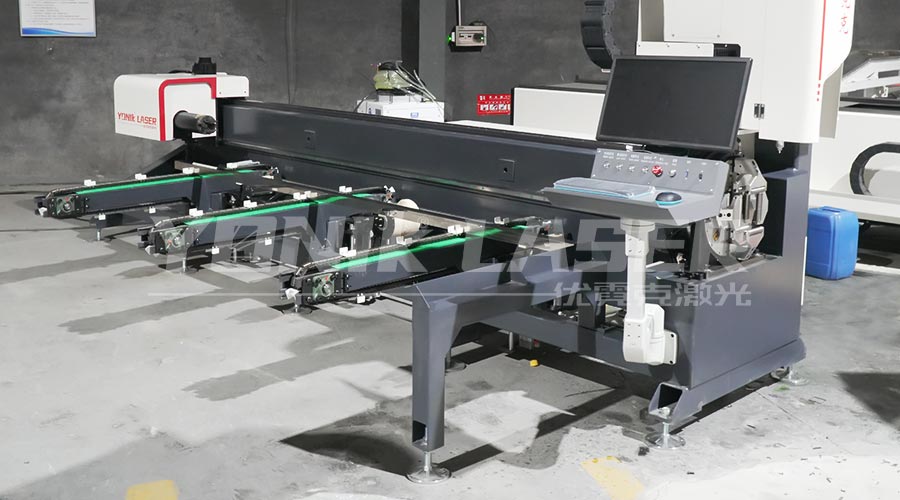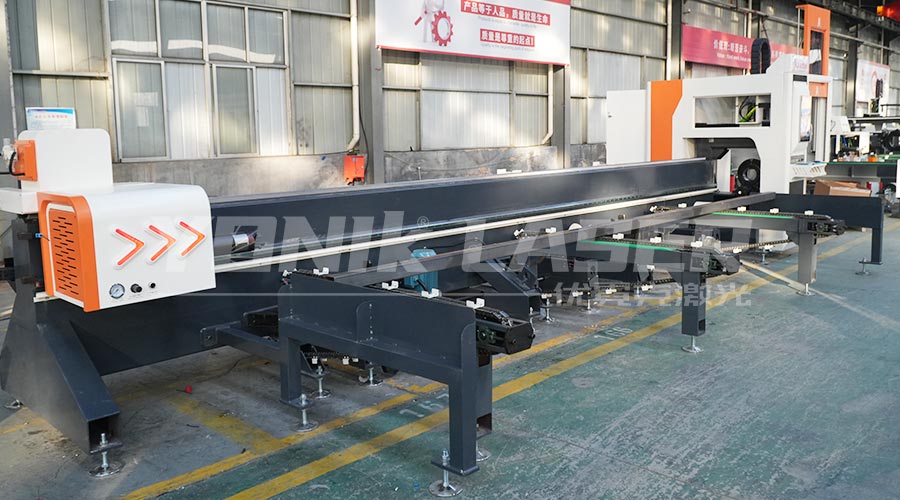The sudden shutdown of a laser cutting machine is like a "cardiac arrest" on a production line, and stopping every minute can cause hundreds of yuan in losses. According to statistics, 80% of sudden shutdowns can be quickly traced to the root cause through fault codes. This article deeply analyzes the underlying logic of 6 high-frequency fault codes, providing step-by-step emergency plans and long-term prevention strategies to help you reduce downtime losses by 70%!

Fault code 1: E101 (cooling system overheating alarm)
Fault performance
The water temperature of the chiller exceeds 35 ℃, triggering an alarm
The laser power drops sharply below 10%
Emergency response process
Immediate power outage: Turn off the main power of the device (power outage response time<30 seconds)
Check the radiator: clean the clogged filter screen (visual transmittance should be greater than 90%)
Water quality testing: Measure the conductivity of cooling water using a TDS pen (standard value<20 μ S/cm)
Long term prevention plan
Install redundant dual chiller system (automatic switching between main and backup units)
Monthly replacement of cooling water (recommended deionized water, resistivity ≥ 18M Ω· cm)
Fault code 2: E205 (abnormal lens temperature)
Fault characteristics
The internal temperature of the cutting head is greater than 55 ℃
Mirror seat temperature sensor triggers protection
Emergency operation steps
Pause homework: Turn off laser output (keep blowing air for 5 minutes to cool the lens)
Check air tightness: Use soapy water to test the sealing ring of the cutting head (the leakage point will bubble)
Replace lenses: If the transmittance is less than 95%, replace immediately (original lens reflectivity ≤ 0.5%)
Suggestions for upgrading protection
Install real-time temperature monitoring module (accuracy ± 0.5 ℃)
Cutting head with vortex cooling device (cooling speed increased by 3 times)
Fault code 3: E308 (insufficient gas pressure)
Alarm conditions
The working pressure is lower than the set value of 0.3MPa for 10 seconds
Quick Recovery Guide
Switch to backup gas cylinder: Ensure that the displayed value on the pressure gauge is ≥ 0.8MPa (for carbon steel cutting)
Check the pipeline: Press the quick connector to test the airtightness (pressure drop<0.05MPa/minute)
Replacing the filter: A clogged 5 μ m precision filter cartridge can cause a 50% increase in pressure loss
Gas system renovation
Install a two-stage pressure reducing valve (output pressure fluctuation < ± 0.02MPa)
Configure intelligent flow meter (real-time monitoring of gas purity ≥ 99.95%)
Fault code 4: E412 (motion axis exceeding limit)
Trigger mechanism
X/Y-axis displacement exceeds mechanical limit by 0.1mm
Emergency reset operation
Switch manual mode: Use the handheld controller to retract the over limit axis (speed ≤ 5%)
Calibration origin: Use a grating ruler to reset the reference point (repeat positioning accuracy ± 0.01mm)
Check the guide rail: Use a laser interferometer to measure the straightness (if the deviation is greater than 0.03mm/m, it needs to be adjusted)
Mechanical system strengthening
Install hydraulic buffer (reduce collision impact force by 80%)
Using an absolute encoder (no need to return to the origin operation)
Fault code 5: E507 (laser power supply overcurrent)
Warning signs of danger
Power module temperature>75 ℃
Output current fluctuation>± 5%
Emergency response plan
Disconnect high voltage: Press the emergency stop button to cut off the 24V control power supply
Grounding detection: Measure the grounding resistance with a megohmmeter (standard value ≤ 1 Ω)
Replace IGBT module: If the resistance deviation of the module is greater than 10%, it needs to be replaced immediately
Power system optimization
Install dynamic power compensation device (power factor increased to 0.98)
Using water-cooled power modules (with a 200% increase in heat dissipation efficiency)
Fault code 6: E999 (emergency stop triggered)
Security protection mechanism
Any safety door switch of the device is disconnected
Press the emergency stop button on the handheld controller
Reset operation specification
Unlock: Rotate the emergency stop button clockwise to the pop-up position
Troubleshooting hidden dangers: Check the status of the grating sensor (effective sensing distance 50-100mm)
Restart the system: Perform a cold start (interval>3 minutes)
Security system upgrade
Configure safety PLC (response time<20ms)
Installation Area Scanning Lidar (Dynamic Protection for Hazardous Areas)
Conclusion: Building a three-level fault defense system
Real time monitoring layer: Installing an industrial IoT gateway (collecting 500+device parameters per second)
Intelligent diagnostic layer: Deploying AI fault prediction system (warning potential risks 2 hours in advance)
Emergency response layer: Establish a 15 minute rapid response mechanism (with a spare parts inventory coverage rate of 95%)
Immediate action: Click to download the "Laser Cutting Machine Fault Code Quick Check Manual", or schedule an engineer for FMEA (Failure Mode Analysis) special testing! Follow us for a device lifecycle management solution.

Related keywords: laser cutting machine alarm code, E101 fault handling solution, cooling system maintenance standards, motion axis limit reset, laser power overcurrent protection, equipment safety system upgrade, industrial IoT monitoring, preventive maintenance system
2025-07-22
2025-07-21
2025-07-19